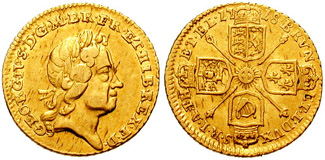____________________________
Medallion of George I by Jean Dassier.
1731.
Bronze
41mm
Obv: Bust of George I GEORGIUS. I. D. G. MAG. BR. FR. ET. HIB. REX.
Rev: Tomb, on one side of which is Justice, holding her sword in her right hand and resting her left arm on a book. At right is Peace holding an oak cluster. NAT. 18. MAI. 1660. CORONAT. 21. OCT. 1714. M. 12 IUN. 1727
Signed: I.D.
Ref: M.I. ii, 475/94; Eimer 77/508; Eisler I, 264/33; Thompson 34/32
Image used with the kind permission of Benjamin Weiss.
________________________________
Ivory bust of George I.
by David le Marchand (1674 - 1726).
inscribed ad vivum.
Victoria and Albert Museum.
Bought
from Alfred Spero for £175, 12A Regent Street, London, in 1931. Previously sold
Waring and Gillow, 26 October 1920, lot 1075 ('a unique contemporary carved
bust of Louis XVI...on ebonised pedestal').
Height of bust alone 25cms.
The V and A suggest a date of 1714 or after.
All these images from the Victoria and Albert Museum.
see -
__________________________
Ivory Relief of George I.
David le Marchand.
British Museum.
______________________________
For the Michael Rysbrack portrait sculpture of George I see my blog entry see -
_______________________________________________________________
The Barber Institute Bronze Equestrian Statue of George I.
Workshop of John van Nost II.
For more on this statue see my blog entry -
van.html
Another version in lead was set up at Stow in 1723 see my blog entry -
and for another version in lead at Hackwood Park set up in 1722.
Engraving by Francois Chereau (1680 -1729).
© National Portrait Gallery, London.
____________________________
Simon Francois Ravenet (1706 - 74).
From Smollet's A Complete History of England (Volume 10 - 1758 - 60).
Isaac Gosset.
Wax.
c.1760.
This ivory coloured wax head
and shoulder profile portrait depicts George I in profile, facing right. He is
shown wearing a full-bottomed wig, armour and a shaped robe. It is set on an
oval shaped black-backed ground and with an ebonised moulded oval wooden frame
with glazed front. Vertue described the skill of the ‘Ingenious Isaac Gosset’
as ‘so universally approved on for likeness’ that he dedicated a section in his
notebooks to wax carving, which he considered a growing industry. Gosset was
from a Huguenot family which had fled to Jersey after the Revocation of the
Edict of Nantes. The family later moved to London and Isaac learned wax
modelling and frame carving from his uncle Matthew. His wax production was
prolific and covered both classical and contemporary figures. Gosset’s renown
lay in the fact that, unlike most contemporary wax modellers, he worked from
life, and at speed, apparently producing a portrait in under an hour. Gosset
also created a secret recipe for tinting his wax to appear like old ivory. His
waxes were highly fashionable and were sold at four guineas a piece for an
original portrait or one guinea for a copy. Vertue noted that Gosset ‘had the honour
of the King sitting to him’ as well as ‘great numbers of persons of Quality and
persons of distinction – Learned and others’. Queen Caroline is known to have
commissioned various works from Gosset, and may even have granted him a
pension. The Picture Closet at Kensington displayed numerous waxes, framed both
singly and in groups of up to 16 figures. Some Vertue catalogued as historic
and contemporary princes but most remained unidentified. Text adapted from The
First Georgians; Art and Monarchy 1714 - 1760, London, 2014.
Provenance
Possibly from the collection of
George III.
Text and image from - Royal Collection.
_______________________________
Here Attributed to Isaac Gosset.
Wax.
Victoria and Albert Museum.
________________________
A Medallion of George I
Made to Celebrate his entry into London
The reverse showing London presenting the key of the city in front of the Royal Exchange.
By J Croker
1714
48 mm diam.
From
_____________________________________________
A young George I as Prince of Hanover.
c. 1680
Mezzotint after Kneller
Low resolution of Mezzotint of George I when Elector of Hanover.
After Johann Leonard Hirshmann
1706
George I
Engraving after Kneller.
George Vertue
1718.
_________________________________________
The Line of Kings - Tower Armouries - Tower of London
The figures of George I and George II were placed in the line in 1750 and 1768 respectively. The inclusion of George I, somewhat belatedly, had already been approved in 1730 but the order was not completed. Suitable armour to represent George I was finally identified in 1750 at Windsor Castle. The most curious feature to emerge during this period however is the casting of a metal head by the sculptor, John Cheere. This was apparently the only occasion that metal was considered as a sculptured element in the display. However, although the head was not used he was still paid £8 8s 0d for his efforts in 1751.
________________________________________
George I
Georg Wilhelm Lafontaine (1680–1745).
Royal Collection.
John Vanderbank (1694 - 1739).
316 x 240 cms.
Entered the collection 1932
Royal Collection.







































.jpg)






















